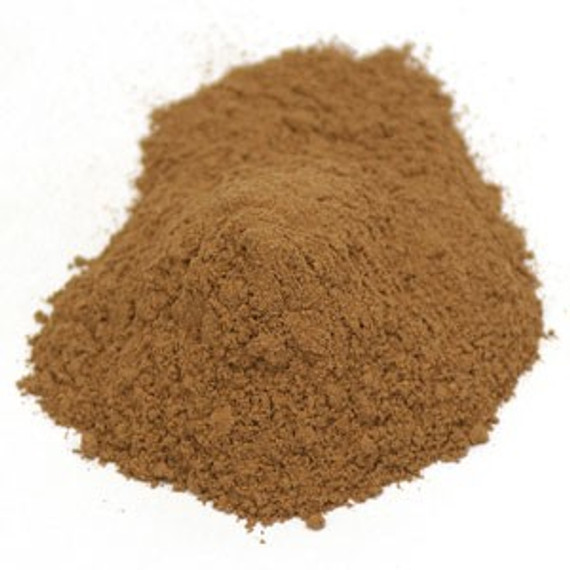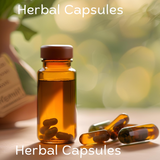Phellodendron Bark (Huang Bai): The Bitter Herb That Clears Heat, Calms Inflammation, and Restores Balance
Introduction to Huang Bai: A Time-Honored Detoxifier
Phellodendron bark, known in Traditional Chinese Medicine (TCM) as Huang Bai (黄柏), is the dried inner bark of Phellodendron amurense or Phellodendron chinense. Revered for centuries as a primary bitter-cold herb that clears damp-heat, it plays a critical role in purifying the lower burner, relieving inflammatory skin conditions, and cooling fire from Yin deficiency. This powerful botanical is frequently found in classic and modern Chinese herbal formulas targeting infections, urinary discomfort, and hot, swollen skin conditions.
Historical Note: Huang Bai appears in foundational TCM texts like the Shennong Bencao Jing, where it was recorded as an essential herb for reducing heat toxins and supporting the Kidneys and Bladder.
Key Active Compounds and Their Effects
| Compound | Function |
|---|---|
| Berberine | Antimicrobial, antifungal, supports blood sugar regulation |
| Palmatine | Antibacterial, anti-inflammatory |
| Phellodendrine | Enhances immune activity and modulates inflammation |
| Magnoflorine | Antioxidant, neuroprotective |
These compounds make Phellodendron a valuable herb for both topical and internal inflammatory conditions.
Traditional and Clinical Uses of Huang Bai
1. Clears Damp-Heat from the Lower Jiao
Huang Bai is a key herb for conditions involving damp-heat in the urinary tract, genitals, and intestinal system. Common symptoms include:
-
Burning urination
-
Foul-smelling stools or discharge
-
Swollen, hot skin eruptions
2. Reduces Skin Inflammation and Fire Toxins
Used internally and externally, Huang Bai is renowned for treating:
-
Weeping eczema
-
Fungal infections
-
Boils and carbuncles
-
Acne linked to heat and toxicity
3. Drains Kidney Fire and Nourishes Yin
When paired with herbs like Zhi Mu, Huang Bai addresses Kidney Yin deficiency with signs of internal heat:
-
Hot flashes
-
Night sweats
-
Low back soreness
-
Seminal emissions
4. Detoxifies the Gut and Liver
This bitter herb helps cleanse toxins from the GI tract and liver. In clinical use, it is often combined with Huang Lian and Bai Tou Weng for cases of:
-
Dysentery
-
Sticky stools
-
Intestinal inflammation
Modern Research Highlights
-
Antimicrobial: Effective against Staphylococcus aureus, E. coli, and Candida albicans.
-
Anti-inflammatory: Suppresses cytokine release and inflammatory markers.
-
Antioxidant: Protects liver and skin tissue from oxidative damage.
-
Blood sugar regulation: Berberine contributes to improved insulin sensitivity.
PubMed-Backed Research: Study on Berberine and Inflammation, Clinical review on Phellodendron’s antifungal effects
Clinical Applications and Herbal Pairings
| Condition | Phellodendron Role | Best Combined With |
| UTI / Vaginal Discharge | Clears damp-heat from lower jiao | Zhi Mu, Che Qian Zi |
| Yin Deficiency Heat | Drains fire from Kidneys | Zhi Mu, Sheng Di Huang |
| Skin Lesions | Clears fire toxin | Ku Shen, Lian Qiao |
| Damp-Heat Diarrhea | Detoxifies GI and liver | Huang Lian, Bai Tou Weng |
Common Herbal Formulas Featuring Huang Bai
-
Zhi Bai Di Huang Wan – Clears Yin deficiency fire
-
Long Dan Xie Gan Tang – Clears Liver and Gallbladder damp-heat
-
Huang Lian Jie Du Tang – Detoxifies fire toxins throughout body
Internal Use vs. Topical Use
| Form | Application | Notes |
| Decoction | Diarrhea, UTIs, Yin fire | Strong bitter taste, use short term |
| Capsules | Acne, inflammation, heat signs | Convenient, milder, long-term option |
| Tincture | General damp-heat clearing | Easy to absorb, moderate strength |
| Topical | Sores, boils, athlete’s foot | Combine with Ku Shen for fungal relief |
FAQ:
Is Huang Bai safe for daily use?
Yes, in correct doses and when part of a balanced formula. Long-term use should be monitored by a TCM practitioner.
Can I take it during menstruation?
If you are experiencing damp-heat or infection, yes. Avoid if there is cold or blood deficiency.
What are signs I need Huang Bai?
Hot, damp discharges, burning urination, night sweats, foul-smelling stools, or weeping skin sores.
Are there Western herb alternatives?
Goldenseal (Hydrastis canadensis) shares similar berberine content and antimicrobial activity, but Huang Bai has a broader range of TCM applications.
How to Choose High-Quality Phellodendron Bark
-
Look for: Wildcrafted or organically cultivated bark
-
Avoid: Powdered forms without proper sourcing or testing
-
Verify: Lab testing for heavy metals, especially if grown in industrial regions
Shop Certified Organic Phellodendron Bark: 1st Chinese Herbs Phellodendron Products
Sustainability and Ethical Sourcing
To prevent overharvesting of wild Phellodendron amurense, ethical suppliers now turn to cultivated, sustainably harvested bark using managed forestry practices. Always choose herbs from verified GMP-compliant and geo-authenticated sources.
Customer Testimonial
"After using Huang Bai extract from 1st Chinese Herbs, my chronic yeast issues and skin irritations calmed dramatically within weeks. I now keep it as a staple in my herbal cabinet."
— Rebecca L., Portland, OR
Herbal Information for Phellodendron Bark in Cut Form
Common Names: Phellodendron bark, Amur Cork Tree Bark
Botanical Name: Phellodendrop spp.; Cortex
Pin Yin Name: Huang Bai
Organic: Yes, USDA Certified Organic
Other Ingredients: None, nothing has been added to this product.
Package Size: One Pound (1lb)
Form: Cut, Certified Organic
Origin: China
Brand: Nuherbs Organics
Cautions: Do not use if pregnant or nursing.
California Prop 65
Additional Information for Huang Bai Health Benefits
- Benefits Cardiovascular Health (1)
- Reduces Kidney Fire
- Supports a Healthy Urinary Tract System
- Clears Heat Fire
- Temporary Relief of Inflammation
- Elimination of Oils and Abscess
- Dispels Damp
- Expels Toxins
- Support Proper Digestion when occasional Diarrhea is present
Product Properties: Bitter, Cold
Channels/Meridians: Kidney, Bladder
Naturally Occurring Components of Huang Bai
1. Berberine
2. Jatorrhizine
3. Magnoflorine
4. Phellodendrine
5. Candicine
6. Palmatine
7. Menisperine
8. Obaculactone
9. Obacunone
10. Obacunonic acid
11. β-sitosterol
12. Campesterol
Therapeutic Uses And Benefits
Phellodendron bark (Amur cork tree bark) has a strong bitter taste and is best known as diuretic and cooling herb that aids to stimulates the liver and gallbladder. Phellodendron bark has both antimicrobial and antibiotic properties due to the alkaloids present in the plant. The active constituents of this herb are berberine, jatrorrhizine, magnoflorine, candicin, palmatin, obacunone, 7-dihydro stigmasterol, beta-sitosterol, and campesterol. Phellodendron bark has a strong antibacterial effect which can aid to soothe internal stomach aliments. Phellodendron bark acts as an anti-diarrheal with strong anti-inflammatory properties.
Phellodendron bark (Amur cork tree), also referred to as Huang Bai in China, is commonly used in Chinese herbalism. A strongly bitter remedy, the bark is regarded as a detoxicate for hot damp conditions. The bark is alterative, antibacterial, antirheumatic, aphrodisiac, bitter stomachic, expectorant - to aid in the relief of congestion, hypoglycaemicm - a supportive additive to maintain blood sugar levels, and tonic.
Berberine
Berberine is a bioactive compound that can be extracted Huang Bai. Berberine affects the body at the molecular level, and has a variety of functions inside cells. One of the main functions is activating an important enzyme called AMPK (AMP-activated protein kinase), which regulates metabolism. Additionally it has a yellow color and has often been used as a dye.
Berberine plays a supportive role as an effective herb to maintain normal weight.
Berberine contributes and assists in reducing cholesterol and triglyceride levels, while raising HDL, the good cholesterol. Berberine benefits long-term cardiovascular health.
Final Thoughts: Why Huang Bai Deserves a Place in Modern Herbal Practice
Huang Bai isn’t just a TCM relic—it’s a clinically relevant botanical with a broad scope of use in treating heat-driven imbalances. Whether you are dealing with recurrent UTIs, damp-heat skin eruptions, or Yin-deficiency fire, Phellodendron bark offers targeted, evidence-supported, and tradition-backed healing power.
Explore its benefits further, or add it to your herbal protocol today.
Order Organic Phellodendron Bark Here
Check out our How to Use Bulk Herbs page to see how to use herbs correctly. Our web page is constantly expanding, as of today we have articles on:
- How to make salves, poultice, tinctures, teas, capsules, gargles, and foot bathes
- How to make a citrus facial splash
- Cayenne pepper: Caterpillar and aphid spray ( Natural insect repellent )
- Citrus potpourri basket
Nuherbs
Each batch of herbs is dual-lab tested by in-house lab and independent third party lab. In-house lab is equipped with instruments such as a high performance liquid chromatograph, moisture determination meter, Fourier transform infrared spectrometer, atomic absorption spectrophotometer, gas chromatograph, etc.
In addition, the following additional tests are performed:
- Microbacteria
- Pesticides - over 200 pesticides tested for (Uab 2000 screen)
- Heavy Metals - Lead, Mercury and Arsenic
References: (1) https://www.ncbi.nlm.nih.gov/pmc/articles/PMC2409365/
https://www.americandragon.com/Individualherbsupdate/HuangBai.html
https://en.wikipedia.org/wiki/Hu%C3%A1ng_b%C7%8Ei
https://en.wikipedia.org/wiki/Phellodendron_amurense
https://herbpathy.com/Uses-and-Benefits-of-Huang-Bai-Cid1598
http://catstcmnotes.com/pages/Herbs/Singles%20Catalog/Clear%20Heat/Dry%20Damp/huang%20bai.html
Lee, Sun Haeng, and Sung Chul Kwak. "Effects of Huang Bai (Phellodendri Cortex) and Three Other Herbs on GnRH and GH Levels in GT1–7 and GH3 Cells." Evidence-Based Complementary and Alternative Medicine 2016 (December 16, 2016): 1-6.


























